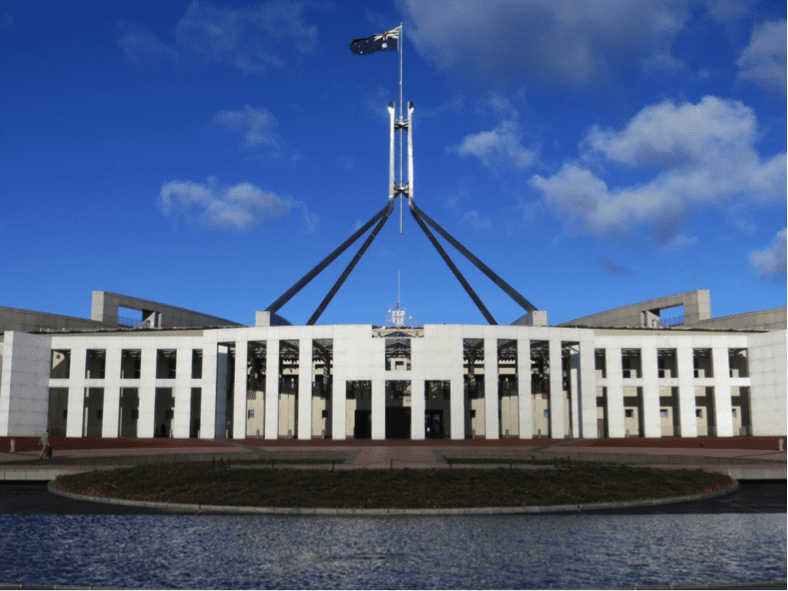CONTENT WARNING: COVID-19, Climate Change, War, Death
In 1942, bombs fell from the sky in Northern Australia. Nazis occupied most of Europe. And tens of thousands of Australians had been deployed all across the world. Back home in Canberra, our leaders weren’t just thinking of how to win the war, they were thinking of life after the war. When the government of the day established the Department of Post War Reconstruction, we would live through two more years of sacrifice, courage and hardship before the war ended.
In 2020, we are facing a health crisis that has infected millions and taken hundreds of thousands of lives. As a result, an economic crisis has ensued that could potentially be more harmful than the health crisis that caused it. On the other side of this crisis, we shouldn’t emerge just having a greater knowledge of Tiger King and the intricacies of Zoom screen backgrounds. We need to reflect now in the midst of isolation, like they did in 1942, how we want society to be when this is all over.
When this is all over, the coronavirus will have done two things. It will have exposed the weakness in our old systems of the past, and it will have provided a blueprint for the future.
The threat COVID-19 has posed to our society has forced our government to act. They have rightly, in my opinion, locked down our society, injected hundreds of billions of dollars into the economy, doubled the rate of Newstart and placed thousands of people experiencing homelessness into hotels.
There is no denying that these measures are not sustainable in the long term. But as young Australians, we should be hopeful. I am optimistic that our government will wake up and respond with the same urgency to challenges beyond the immediate threat of COVID-19.
The reason we aren’t strolling the halls on Daley Road and packing into Moose on a Thursday is because of the advice of health professionals. The medical officers around Australia have advised that we should limit social interaction, and we have all listened. If you asked those same health experts if climate change posed an even greater risk to our lives and livelihoods, they would say yes. Of course, COVID-19 is a more imminent threat and understandably requires a more urgent response. But this doesn’t mean we should neglect the dire health impacts of climate change.
In fact, I hope that this crisis changes how our politicians respond to the objective advice of experts and scientists. No longer can politicians sit back and ignore the advice of scientists. No longer can politicians dismiss this advice as fiction. No longer can politicians cite the economy as being the capstone of our society. The 2019 election was won on the Liberal party’s promise of a Budget Surplus over action on the environment. No longer can they do this. And no longer should they do this.
If we want realistic action on climate change, we can’t just rely on the government. We all need to act. After the crisis, society should accept that in order to transition to a cleaner and more sustainable economy, sacrifices are going to have to be made. Sacrifices are being made now for our health crisis, and sacrifices are going to have to be made on the other side for the climate. Our society will hopefully be more receptive to these sacrifices because of our collective experience living through COVID-19.
Without a doubt, climate change is the most pressing issue to face our generation. But there are other structural issues in our society that need to be addressed. The rate of Newstart of $40 a day before the crisis was clearly too low. The government refused to raise the rate before, but has now doubled the rate to $1,100 a fortnight. Understandably, there are questions that need to be asked about why the rate was kept so unacceptably low for so long. Emerging from our economic crisis, we need to consider how social welfare isn’t about ‘lifters and leaners’ but instead about providing help to those who have been denied opportunities.
Before the crisis, the workforce was already highly casualised. I, like thousands of other university students, lost my casual job due to the coronavirus. This government during the crisis has left one million casual workers locked out of its job keeper program. Our finance minister claimed that low wages are “A deliberate design feature of our economic architecture.” Comments like these demonstrate how this government views the casualised workforce. After the crisis, if we want to live in a more inclusive society, the nature of the labour market needs to be re-evaluated.
The other side of this crisis shouldn’t be characterised by further inaction on these problems of the past.
The actions of the Australian government in 1942, to address life after the war, established Australia’s long boom. The government of 1942 had one clear aim: for standards of living to be better in the period after the war than the period before. They achieved this, because they thought in the midst of their crisis about what society should look like after the war.
Right now, we need to think deeply about life on the other side. A life where collective urgency is able to right the wrongs of the past and progress our society. A life where we reach the other side having learnt what government can do when they put the people first. A life which is better after the crisis than before it.
We acknowledge the Ngunnawal and Ngambri people, who are the Traditional Custodians of the land on which Woroni, Woroni Radio and Woroni TV are created, edited, published, printed and distributed. We pay our respects to Elders past and present. We acknowledge that the name Woroni was taken from the Wadi Wadi Nation without permission, and we are striving to do better for future reconciliation.
